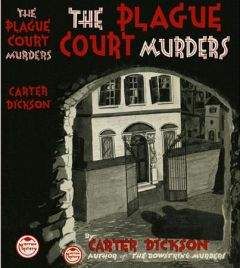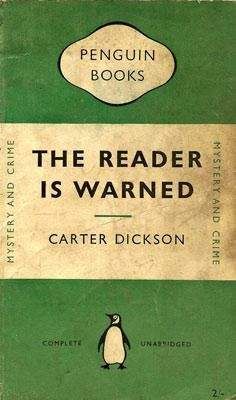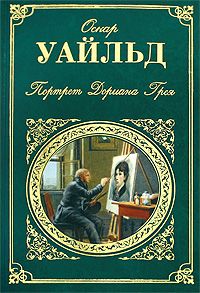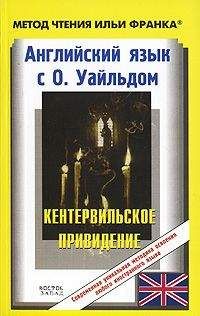Carter Dickson (John Dickson Carr)
The Plague Court Murders
(Sir Henry Merrivale 01)
OUT OF THE ORDINARY
They hired psychic Roger Darworth to exorcise the Plague Court ghost.
The ghost of Plague Court was no ordinary ghost. Hardly. Reportedly a malevolent soul on the lower plane, it was always watchful, always cunning, always waiting to possess a living body and to exchange that body's weak brain for its own just as it had done since its first appearance in 1665.
The exorcist, Roger Darworth, was no ordinary exorcist. Of course not. Actually, he was a first-rate fraud who had been under police surveillance for months.
It follows then that the exorcism of Plague Court was no ordinary exorcism. Naturally-or perhaps supernaturally-not after the exorcist was found brutally murdered in a small stone house with its door both padlocked and bolted, its windows barred, and with no secret entrances. And the murder weapon? Far, far from ordinary. It was an ancient knife which was said to be the property of the Plague Court ghost.
By now we all know that Sir Henry Merrivale is no ordinary detective. Here he is in his first recorded appearance. And THE PLAGUE COURT MURDERS is not an ordinary mystery novel. How could it be? After all, it is the first book to bear the name of Carter Dickson, a/k/a John Dickson Carr, and by either name a most extraordinary author.
"This is a genuine baffler, placed in an eerie, ghostly setting. Any reader who is able to guess the solution before Sir Henry chooses to reveal it is entitled to call himself a first-class amateur detective:'
-Isaac Anderson New York Times Book Review
June 3, 1934
"Excellent plus."
Saturday Review of Literature
"This thickly atmospheric work provides a sure and pleasant means of giving yourself the jumps... for those who wish to be scared on every page'
-Will Cuppy Books
THE PLAGUE COURT MURDERS
Copyright © 1934 by William Morrow & Company, Inc. Copyright renewed 1961 by John Dickson Carr. Published with the permission of the author's estate and Harold Ober Associates Inc.
Introduction: Copyright © 1990 by Douglas G. Greene.
Printed and manufactured in the United States of America.
First IPL edition, June 1990.
INTRODUCTION
The Plague Court Murders is a tale of a haunted house as only John Dickson Carr (aka, Carter Dickson) could tell it.
Throughout his life, Carr was fond of ghost stories. In a recently discovered article that Carr wrote when he was fifteen years old, he remarked: "To like such stories is entirely natural. We love to be scared, but unconsciously we challenge anyone to do it.... Despite science, despite common sense, still we lie awake o’ nights with a volume of Poe-of Kipling-of Marion Crawford-in our hands, while outside the circle of light thrown by the lamp at our bedside flit all the mocking phantoms of fancy, defying science, defying common sense to crush the ghost story:' Poe and Kipling are great figures in the history of the supernatural tale (and much else), but F Marion Crawford has been almost forgotten. Nonetheless, Carr praised several of Crawford's short stories, especially a small masterpiece called "The Screaming Skull," whose opening lines Carr liked to quote:
I have often heard it scream. No, I am not nervous or imaginative; and I never believed in ghosts, unless that thing is one. But it hates me as it hated Luke Pratt, and it screams at me.
Four years after the publication ofThe Plague Court Murders, Carr wrote an article called "...and Things that Go Bump in the Night" about ghosts in fact and fiction. Its discussion of important writers of supernatural fiction indicates Carr's wide reading. Among the authors whom he singled out are W. F. Harvey, M. R. James, L. P. Hartley, Sir Arthur Conan Doyle, J. Sheridan LeFanu, Bram Stoker, E. F Benson, Margaret Irwin and Algernon Blackwood.
At least four of Carr's earliest stories are about ghosts. For example, "The Will-0'-The-Wisp;' written while he was still in high school, already combines two of his abiding interests, the supernatural and historical romance. When he went to preparatory school in Autumn 1922, he continued to write such tales: One is a ghost story of Christmas, another comes close to being a historical horror tale, and a third brings together in unexpected fashion ghosts, humor and drinking. In short, the young John Dickson Carr was as interested in ghost stories as he would be in fictional detection.
It was at Haverford College that John Dickson Carr began what we might call "The Carrian Synthesis," the nearly perfect integration of supernatural atmosphere, seemingly impossible events, and rational detection. In several short stories done for The Haverfordian between December 1926 and June 1928 (reprinted in The Door to Doom, 1980), Carr had M. Henri Bencolin of the Surete solve murders and vanishings that take place in locked and guarded rooms. In each of the stories, Carr hints that the answer can only be supernatural. In "The Shadow of the Goat' for example, Sir John Landervorne tells Bencolin that "I shall have to tell you a story which will not interest you, unless you believe in sorcery." "The Murder in Number Four" begins, "During the night run between Dieppe and Paris, on a haunted train called the Blue Arrow, there was murder done." At the conclusion of each tale, however, Bencolin explains that the impossibilities were devised by humans for human reasons. The ghosts disappear, the witchcraft vanishes-until the next story again opens the door to the unknown.
Carr's final story for The Haverfordian was a novella called "Grand GuignolI which also featured Henri Bencolin. Much enlarged, it became his first novel, It Walks By Night, published in February 1930. Like his short stories, the novel begins with the suggestion that the impossible murder-in this case, a grisly beheading in a room under constant observation-must have been committed by someone in league with dark powers. The suspect seems to be a "night monster" who "by night becomes a misshapen beast with blood-bedabbled claws." Carr followed It Walks By Night with three other eerie cases for Bencolin, one of which, Castle Skull (1931), was set in a seemingly haunted castle on the Rhine.
Carr tired of Bencolin but not of creeps and chills. Poison in Jest (1932) comes close to having a haunted house. The events take place in America, in a rambling estate near Carr's hometown of Uniontown, Pennsylvania. In this story, various characters see a disembodied hand, apparently once belonging to a statue of Caligula, crawling about on its own locomotive power. But nothing much is done with this, and the emphasis of the book is not on ghosts. Even closer to housely haunting is the first Dr. Gideon Fell novel, Hag's Nook (1933), with its spirit-ridden prison. The same year, The Bowstring Murders was published under the pseudonym Carr Dickson. Its detective, the elderly and "slightly drunk" Sir John Gaunt, is one of Carr's most interesting characters, but the book shows signs of hurried writing. Carr produced it at white-hot speed toward the end of 1932 to earn money for a trip to England with his new bride. As with Poison in Jest, the novel has much that might have made a good story of hauntings: the murder, which occurs in a room whose entrances are under observation, may have been committed by an ambulatory suit of armor. But Carr doesn't sustain the atmosphere, and the solution to the impossible crime is cribbed from It Walks By Night.
All of which is a lengthy way of saying that The Plague Court Murders, originally published in 1934, is not only the first Sir Henry Merrivale novel, but also Carr's first fully developed hauntedhouse story. Instead of having the ordinary spooks that might congregate around any house that has such a horrid history as Plague Court, Carr based the tale around the fashionable ideas of spiritualism. Beginning with the Fox sisters in 1848, spiritualists claimed to be mediums (or, sometimes, to use others as mediums) to allow the spirits of the dead to communicate with the living.
Carr's interest in spiritualism began with Sir Arthur Conan Doyle's lecture tour of the United States in 1922. Doyle had lost a son during the First World War, and using his wife as medium, he believed that he had contacted him in the afterlife which he called, in a rather discordant note, "Summerland." Doyle was also a fervent advocate of the genuineness of spirit photography and even of photographs of fairies. At the age of fifteen, Carr wrote no fewer than five articles for his local newspaper disagreeing with Doyle's views. "Is it possible that the master mind who conceived Sherlock Holmes and gave to him the keenest intellect of any detective in fiction, has been deceived by parlor magic? Many think so." Carr then recounted various methods that fake mediums use to produce their effects.
Moreover, he objected to spiritualism on artistic as well as materialistic grounds. The great people of the past, he said, would not "return to earth to bang tamborines and maltreat furniture" People who believe that the dead can contact the living have usually suffered a recent bereavement and are therefore in a receptive frame of mind. "The hope that they may yet bring back their lost has affected them so that they imagine they feel the soft caress of hands on their cheek, or hear musical voices whispering secrets into their ears." This was probably the case with Doyle himself, and in The Plague Court Murders, with Lady Benning. A few years later, Carr read Harry Houdini's classic expose of spiritualism,A Magician Among the Spirits (1924), and he used several of the tricks described in that book as plot devices in his own stories, including the one you are about to read.
Carr created his effects by using atmospheric writing to prepare the reader for horrors, and then bringing in common sense to dispel them. The house at Plague Court is described in words reminiscent of the old writers of Gothic terror:
It had almost a senile appearance, as of a brain gone, but its heavy cornices were carved with horrible gaiety in cupids and roses and grapes: a wreath oil the head of an idiot.... In the vast fireplace burnt a very small and smoky fire. Strung along the hood of the mantelpiece were half a dozen candles burning in tall brass ` holders. They flickered in the damp, showing above the mantelpiece, decaying fragments of wallpaper that had once been purple and gold. There were two occupants of the room-both women. , It added a sort of witch-like eeriness to the place. J
Sometimes, however, Carr's language is understated. Of all ghost-story writers after Poe, he may have most admired Montague Rhodes James, whose trick of making the commonplace redolent with terror he borrowed forThe Plague Court Murders. In his article, "... and Things that Go Bump in the Night," Can wrote that James's stories contain "no sensations in crude colours. They are for the sophisticated. Dr. James never `cracks the whip or goads the adjective, but terror comes as lightly as a face poked suddenly around a corner." Probably the most terrifying image inThe Plague Court Murders, the one that seems ordinary in itself yet suggests supernatural horror, is the man glimpsed only from the back who holds his neck at an odd angle.
Into this story comes Detective-Inspector Humphrey Masters, cynical and unruffled. It may be that Carr originally planned to make Masters the sole detective in the story. He so dominates the early sections that the publishers of the first paperback edition (Avon, 1941) described the book on the front cover as "A Chief-Inspector Masters Mystery." But whatever Carr's original plans were, he decided that Masters would not solve the mystery. The reader who expects common sense to overcome all the terrors, instead finds Masters' knowledge of mediumistic tricks to be insufficient. Then enters Sir. Henry Merrivale - H.M. with his fund of bawdy stories, his constant fear that someone (perhaps Masters) is out to get him, and his earthy enjoyment of life. His biography has been given in the introduction to the IPL edition of one of his finest adventures, The Judas Window, but the point to be made here is that he is without pretensions and it is this very fact that lets him bring sanity to bear on the matter of Plague Court and so many later cases.
In the opening scene ofThe Plague Court Murders, Dean Halliday asks the narrator, Ken Blake, "to spend a night in a haunted house:' Blake "felt an anticipatory pleasure." A few years after writing these words, John Dickson Carr was asked to spend a night in a haunted house owned by his friend, the novelist J. B. Priestley. He too felt an anticipatory pleasure, and was disappointed when nothing even mildly ghostly occurred. But plenty of ghostly things will happen on the following pages, and no reader will be disappointed.
Douglas G. Greene Norfolk, Virginia December 1989
Series consultant Douglas G. Greene is busily at work on the authorized biography of John Dickson Carr. He is also putting the finishing touches to the first volume of the collected short fiction of that author which will be entitled Fell and Foul Play, and will be published in the fall of 1990 by IPL:
I
THE HOUSE IN PLAGUE COURT
OLD MERRIVALE, that astute and garrulous lump who sits with his feet on the desk at the War Office, has been growling again for somebody to write the story of the Plague Court murders; chiefly, it is believed, to glorify himself. He does not have so much glory nowadays. His department has ceased to be called the Counter Espionage Service; it has become merely the M.I.D., and its work is somewhat less dangerous than taking photographs of the Nelson Monument.
I have pointed out to him that neither of us has any connection with the police, and that, since I left his service some years ago, I have not even his excuse. Besides, our friend Masters-now Chief Inspector of the Criminal Investigation Department-might not like it. I was, therefore, inveigled into playing a cold poker-hand to determine whether I should write it, or somebody else. I forget who the other person was to be, but it was not Sir Henry Merrivale.
My own connection with the case began on the night of September 6, 1930: the rainy night when Dean Halliday walked into the smoking-room of the Noughts-and-Crosses Club and made his startling statements. And one fact must be emphasized. Had it not been for the streak of morbidity that ran through his whole family-as witness James-or possibly for Dean's fits of hard drinking during the years he was in Canada, he would never have reached a dangerous state of nerves. You saw him at the dub, wiry and vital in his movements, with his sandy mustache, his young-old face and reddish hair, his heavy forehead above sardonic eyes. Yet you invariably felt there was a shadow there-some snag out of the past. Once, in one of those casual shifting discussions, somebody was haranguing us about the newest scientific terms for madness; and Halliday said suddenly, blasting the talk with the personal, "You never know, do you? My brother James, now-" Then he laughed.




